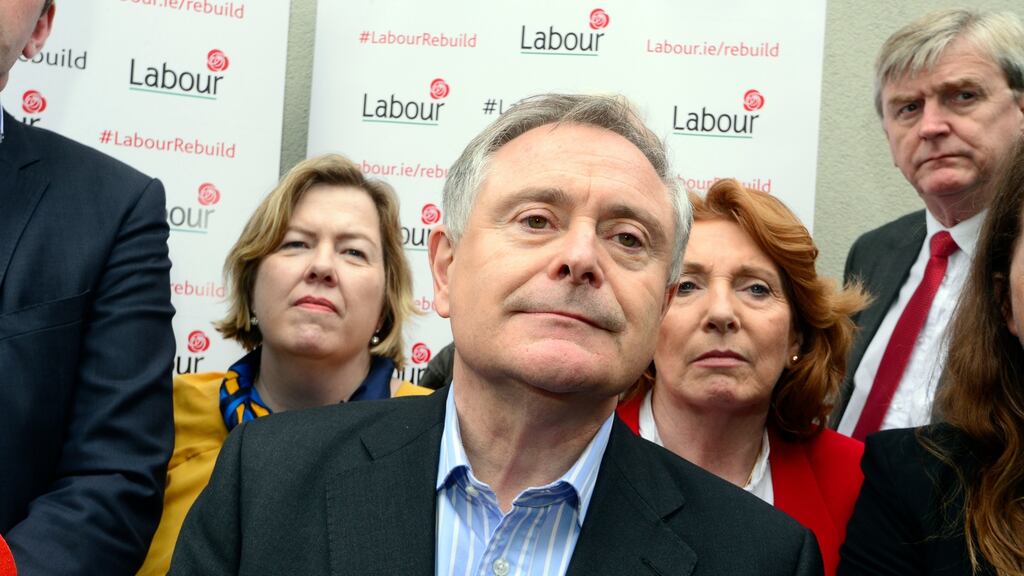As Fine Gael and Fianna Fáil coalesce around the upcoming budget, their poll ratings have similarly converged, with both parties registering 26 per cent support in this latest Irish Times/Ipsos MRBI poll.
For Fine Gael, 26 per cent support means an increase of two points since our July poll, back to the level recorded in the general election earlier this year. Fianna Fáil, on the other hand, has dropped sharply, down seven points, although the party is still significantly ahead of where it was at the beginning of the year.
With Fianna Fáil off the pitch somewhat while agreeing a budget with Fine Gael, Sinn Féin (up three points to 19 per cent) and Independents/Others (up two points to 24 per cent) have made some inroads. On 5 per cent, Labour is unchanged.
Satisfaction with the Government has edged two points lower and is now at 29 per cent – not an overwhelming endorsement but neither is it an outright rejection of “new politics”.
The new Dáil term has yet to ignite. A longer than usual summer break due to refurbishment works has meant deputies have yet to get into their stride. With spending increases and tax cuts on offer next week, and Fianna Fáil agreeing to facilitate the budget if it is consistent with their policy principles, fireworks are not expected.
With little political noise since the beginning of the summer, it makes sense that support levels for the various parties have reverted to the mean of the past few years. Natural territory for Fine Gael, Fianna Fáil and Independents/Others now appears to be early- to late-20s, and for Sinn Féin late-teens to early-20s. Parties will break out of these ranges on occasion without much difficulty, but to establish a new, higher plateau will prove more challenging.
Jockeying for position
Recent pronouncements on how much of an increase for pensioners there should be in the budget epitomises the jockeying for position that we can expect in the week ahead. Not being first to establish a position on the old age pension has not damaged Fine Gael, who are up two points (to 26 per cent) in today’s poll. Among those over 65 years of age specifically, support for Fine Gael remains strong, at 33 per cent (up three points).
Where support for Fine Gael appears to have weakened is among those from farming backgrounds, with 33 per cent support compared with 49 per cent for Fianna Fáil. Prior to the general election in February, Fine Gael were polling comfortably in the 40s within the farming community.
Farm incomes, Brexit, water charges and security all have the potential to swing this important, if shrinking, demographic.
Fianna Fáil, on 26 per cent (down seven points), will be disappointed to have given up so much of the gains made in the July poll. However, the July poll proved Fianna Fáil’s capacity to attract the floating voter once enough water has flowed under the bridge.
Getting out ahead of Fine Gael by pressing for an increase of €5 in the old age pension during the summer does not seem to have had the desired effect for Fianna Fáil, with support among the aged 65+ cohort above average at 35 per cent but no higher than would be expected given the party’s age profile.
Sinn Féin appears to be recovering from its general election low of 14 per cent, climbing to 19 per cent in this poll and back to what is now familiar territory for the party. The pattern Sinn Féin has established since 2007 is to win support between elections, watch some of these voters drift away at election time and then test new highs in the run up to the next election. Two steps forward and one step back. Like any recruitment brand (Sinn Féin dominates among 18 to 34-year-olds), it takes time to build, but growth is guaranteed if your brand can mature in tandem with your followers.
Younger voters
It is with younger voters that Labour noticeably struggles in this most recent poll, registering just 3 per cent support among 18 to 24-year-olds and 4 per cent among 25 to 34-year-olds. The party’s new leader,
Brendan Howlin
, recognises the need to build from the bottom up and of late has been recruiting on campuses around the country. The payback on this grassroots strategy will be measured in years. In the meantime, Labour is languishing in the polls, with just 5 per cent support.
Independents and smaller parties have also made ground over the summer – up from 22 per cent in July to 24 per cent in today’s poll – although this is a far cry from the 30 per cent achieved in the February general election. Among Independents/Others, the Green Party, Anti-Austerity Alliance-People Before Profit and Independent Alliance each attract 3 per cent support, with other parties or groupings achieving 2 per cent or less of the vote.
A rather subdued political atmosphere may go some way to explaining the drop, across the board, in party leader satisfaction ratings. Enda Kenny is down four points (to 29 per cent). Likewise, Micheál Martin is four points lower (on 39 per cent), although he remains significantly ahead of other leaders in the satisfaction stakes. Gerry Adams is down three points (to 28 per cent), while Brendan Howlin has fallen five points (to 21 per cent).
In the absence of an economic shock or a major political drama, we should not expect any significant shifts in the political landscape in the months, even years, ahead.
Fianna Fáil and Fine Gael have carved up one half of the map, with Sinn Féin, Independents and the smaller parties camped in the other half. Labour is on the fence. Let’s hope, for any number of reasons, this stalemate does not hold for long.










